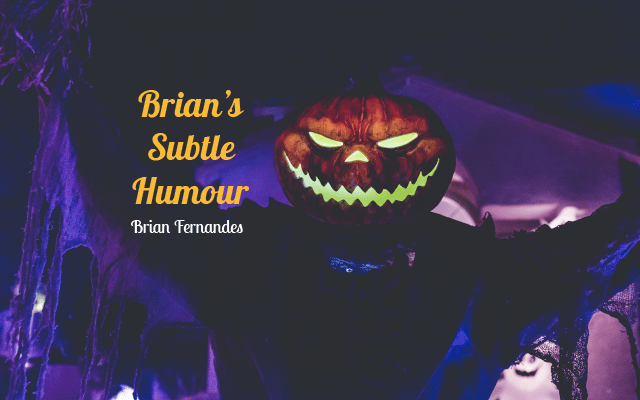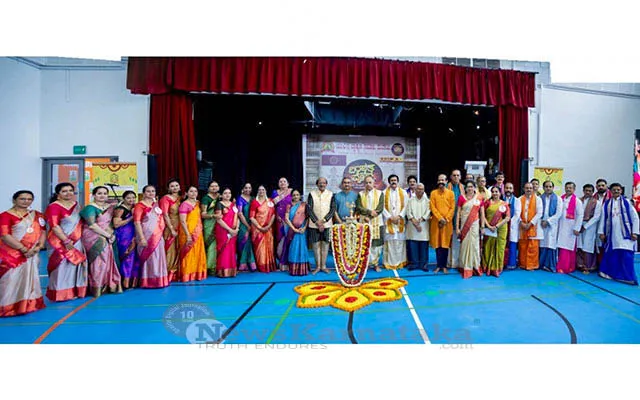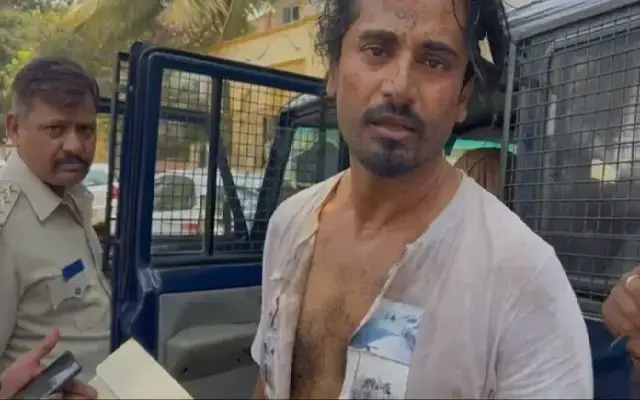The Days of the Dead in the Christian Calendar are upon us. They are active days for those alive full of spirit on one day and full of the grateful dead the next. In between, it’s also about Saints and saintliness.
Those of you familiar with Christian traditions, and that is perhaps just a few (for the rest, enjoy the education) know Halloween is celebrated on 31 October on the eve of All Saints day which falls on 1 November, and the day before All souls day on 2 November. The latter two are the Days of the Dead in the Christian Calendar celebrated with flowers, candles, and prayers in that order, by those alive, those barely alive, and those not wanting to be alive for a variety of reasons, hoping for benevolent connect to the nether world! Is that perhaps why we honour our dead grandly and dishonour those alive modestly? Hard to fathom because to each his own!
A saintly look at Halloween!
But before the mourning on 2 November, and All Saints Day on 1 November, on 31 October, it is time for the Halloween celebration – a celebration and thanksgiving for what the Saints have done for us – fighting evil spirits on our behalf by example, not by costume. We can’t, so on that day, we wear costumes and imbibe the spirit in more ways than one. We carve pumpkins, make them akin to the evil spirits and bash them up. According to Cydney Grannan in the Encyclopaedia Britannica, the jack-o’-lantern has a long history with Halloween, although our favourite demonic faces haven’t always been carved out of pumpkins.
Their origin comes from an Irish myth about Stingy Jack, who tricked the Devil for his monetary gain. When Jack died, God didn’t allow him into heaven, and the Devil didn’t let him into hell, (what an impasse! – happens to so many of us here on earth that is why we sometimes call it hell on earth. It happens when we play both ends against the middle!), so Jack was sentenced to roam the earth for eternity.
In Ireland, people started to carve demonic faces out of turnips to frighten away Jack’s wandering soul. When Irish immigrants moved to the U.S., they began carving jack-o’-lanterns from pumpkins, as these were native to the region. They are called Jack’s lanterns because after they are carved, they are lit so that they may see as they roam around in the dark like evil spirits are supposed to do. These days we find these evil spirits aka Jack Daniels in the daytime too – at the liquor vend.
But how did jack-o’-lanterns become associated with Halloween? Well, Halloween is based on the Celtic festival Samhain, a celebration in ancient Britain and Ireland that marked the end of summer and the beginning of the new year on November 1. It was believed that during Samhain the souls of those who had died that year travelled to the otherworld and other souls who had died previously would return to visit their homes. It is this fear that drove people to dress in costumes witches, ghosts, goblins, and light bonfires to ward off spirits! But why would they want to do so? After all, they were loved ones, (must be because they are called the dear departed!).
Maybe that’s why we get scared, but also excited. What if we meet them in places other than the cemetery or the urn? Will the love rekindle, or will the fear? Good question for those who delivered fantabulous eulogies, obituaries, and tombstones, but did not express the same sentiments when the soul was present in the body that now has no presence, and no presents to give!
In the 8th century CE, the Roman Catholic Church moved All Saints’ Day, a day celebrating the church’s saints, to November 1. This meant that All Hallows’ Eve (or Halloween) fell on October 31. Traditions from Samhain remained, such as wearing disguises (costumes that make you look evil or saintly) to hide from the souls wandering around your home – but you can’t, especially if you have treated them badly.
The folklore about Stingy Jack was quickly incorporated into Halloween, and we’ve been carving pumpkins—or turnips—ever since, and of course wearing costumes and masks – which we wear every day anyway to mask who and what we really are! Prime examples can be found at prime time! Prime is the keyword!
Like Diwali, Halloween is the battle between good and evil spirits – often with a lot of spirit – not necessarily evil in itself, but could be the source of evil, if uncontrolled. Lack of control itself is often attributed to the spirit working within! These spirits can also help you become saintly. You tend to fall asleep under the influence and therefore no sin! Saint. QED.
Halloween is also a celebration of the saints (not the ones described above) for the life, they lived in the service of others, to service to their spirituality. A life we must be inspired to live but often are not! Especially in the modern age.
So, this a time to celebrate, to mourn and to moan in anticipation of the souls that have gone before, saying howdy to yours! They long for your earthly company (not sure why – when it’s a free for all without a free fall up above), even as you long for the spirits. Then why do we drive them away with our costumes and our pumpkins? After all, they are kin! It is a case of Spirits being imbibed or being chased away – The latter is unlikely! A good fight does require a certain spirit after all.
Are you a saint?
It’s easier perhaps to be a saint in the afterlife or the nether life. Being a saint in real life is difficult because it means being a very virtuous, kind, or patient person. You also have to have a special type of relationship with the holy, a relationship that is not automatically obtained by other religious or lay personages through their performance of religious duties or offices. The significance of saintly personages is generally based on words, deeds and supernatural qualities that became apparent during their lifetimes because of the mentoring they receive from above. They continue to exert influence after their deaths, precisely because of what they did while on earth!
Basically, they live here while not living here. And when they go there, they live here, and we derive the benefit of a direct connection with the One above. Something like how the vast majority of the Indian Media believes that a certain Rishi (Sunak) will be their connection with the British Crown, at least so far as the Kohinoor Diamond is concerned! When he was here, he was there, and when he is there, he is here!
Without the spiritual connection, being a Saint while on earth is difficult because here on earth, one man’s virtue is another man’s vice. So, none (not even Nun) has a vice-like grip on what virtue is! It’s easier to wear a costume and a mask. But real saints have to suffer that persona here on earth and hope to be celebrated whilst in heaven. Where perhaps they may be the opposite of saints! They too seek relief from the cares of the world! Who knows? Certainly, not those of us left here on earth.
But one thing’s for sure. A lot of them have considerable influence. They can get things done for you (those you desire and pray for) if you put in at least 50% of the effort required to get them done. That is, be virtuous, kind, patient, and of course hard working. They will handle the destiny/luck/fate part. So, keeping them in your contact book – it’s easy these days, with mobiles, and it is key to a hopeful future for your soul here on earth. Afterwards, it is difficult to say; your eulogy will tell you otherwise but don’t get fooled.
Solkadi – Soup for the Soul
Having celebrated the saints with spirits, it’s time for a rendezvous with souls, the next day. The souls of the dear departed. But what is the soul? it’s not solkadi, a beverage that is an important part of Goan, Konkan and Malvani cuisine made from kokum or Garcinia Indica or the fruit of the Goa Butter Tree! Solkadi though, has the Soul’s properties – cooling and digestive properties, making it a perfect counter to the heavily spiced dishes of the Western Coastal Indian cuisines. But does the soul derive its properties from the solkadi or is it the other way around?
The Soul according to what I’ve (my soul really) read and understood, has three parts – the mind, the self and divinity. It’s your body’s shadowy doppelganger, which is separate from you but resides within you (sometimes has a tough life, sometimes an easy life) – giving life to your thoughts, personality to your presence, and is your connection with the Almighty which you often ignore. Like water. it takes your shape, no matter how out of shape you might be, mingles with your thoughts, guiding them, mentoring them, and weaving them into your personality. Like Solkadi, it has cooling and digestive properties, but it all depends on how much you imbibe and when!
Most cultures believe the soul is a non-paying guest and moves on to better things (like we do – filling a vacancy in the organizational hierarchy!) once you die. It does come back to visit though on All Souls Day 2 November for a reunion – if it is comfortable. And you prepare for it as though you are a Saint. With flowers, candles, and prayers in that order, worried that it may haunt you, hurt you, or bless you. We long for the latter, long after the soul has left us, but did we do enough when it was in our proximity? That is the key to this last day (today) in the Days of the Dead in the Christian Calendar.
I’m feeling deadbeat right now, and my soul tells me to stop – the mind part of it! So, before it leaves me for better prospects, let me wish you a good week – until next week!
Photo by Kenny Eliason on Unsplash
Disclaimer
This Article is written in the lighter vein. It hopes to bring a smile to your face, and you must not ascribe motives to its contents. There is no connection to events and characters in real life and if perchance you find a connection with any such real-life event or character, rest assured it’s purely coincidental.



















